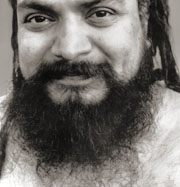The Organization of Yoga Vasishta
Yoga Vasishta is stories within stories within stories. The entire book is a story (Valmiki telling his student, Bharadwaja, what Vasishta told Rama) within a story (Valmiki repeating the story to King Arishtanemi), within a story (the divine messenger telling the story to a celestial nymph named Suruchi), within a story (Sage Agnivesya telling the story to his son, Karunya), within yet another story (Sage Agastya telling the story to his student, Sutikshna). It begins in this context with the fourth verse and ends in this context almost a million words later.
Yoga Vasishta is divided into seven Books. It would seem to end with Book VI Part 1 where Rama attains enlightenment and that Book concludes with, “Thus ends the Maharamayana of Sage Vasishta and spoken by Valmiki relating to the boyhood of Rama and consisting of thirty-two thousand slokas.” (VIA.128.110)
Actually, Book VI part 2 is required to bring the verse count to about 32,000.
Then Book VI Part 2 begins as if the end of Part 1 never happened. This seventh Book concludes with another celebration of Rama’s enlightenment. “Here ends the Maharamayana of Sage Vasishta with its continuation by his recorder Valmiki and the speech of the celestial messenger at the latter end of the Book on Nirvana, the ultimate extinction of the living soul.” (VIB.216.27)
The two parts of Book VI suggest that the entire book’s organization is anything but obvious.
Book I is about Rama’s dissatisfaction with everything the world has to offer. Only fifteen years old (I.5.1, Shivabalayogi said he was only eight), he is unusually mature for his age. This Book is entitled Vairagya, detachment. Constantly throughout all of its seven Books, Yoga Vasishta emphasizes that detachment or lack of desire is the essential preliminary to spiritual awakening.
The setting of Book I is the same as all the other six Books. We are in the court of King Dasharata, the father of Rama. Not only are the nobles and brahmins of the kingdom gathered, but also sages, spiritual masters, gods and demigods from this mundane world and the many spiritual worlds. This is an example of another constant emphasis throughout the book — the need for the aspirant to keep company with the wise, and to listen and reflect upon their teaching and the meaning of the scriptures.
Book II is about the qualities of the aspirant who longs for liberation, enlightenment. It introduces themes that permeate the rest of the book — dispassion, control over one’s desires, company of the wise, study of the scriptures, and self-inquiry.
The titles of the remaining five Books provide the reader with little guidance. Book III is entitled creation, Book IV is on existence, Book V is about dissolution or abiding in stillness, Book VI is on nirvana or liberation, and its Part 2 is labeled the “latter treasury.” But the contents of all but the first Book are permeated with the need for dispassion and abandonment of desires, creation and its existence and dissolution, and the nature of nirvana or Self-realization. All these subjects are intermingled repeatedly throughout the book.
![]()

